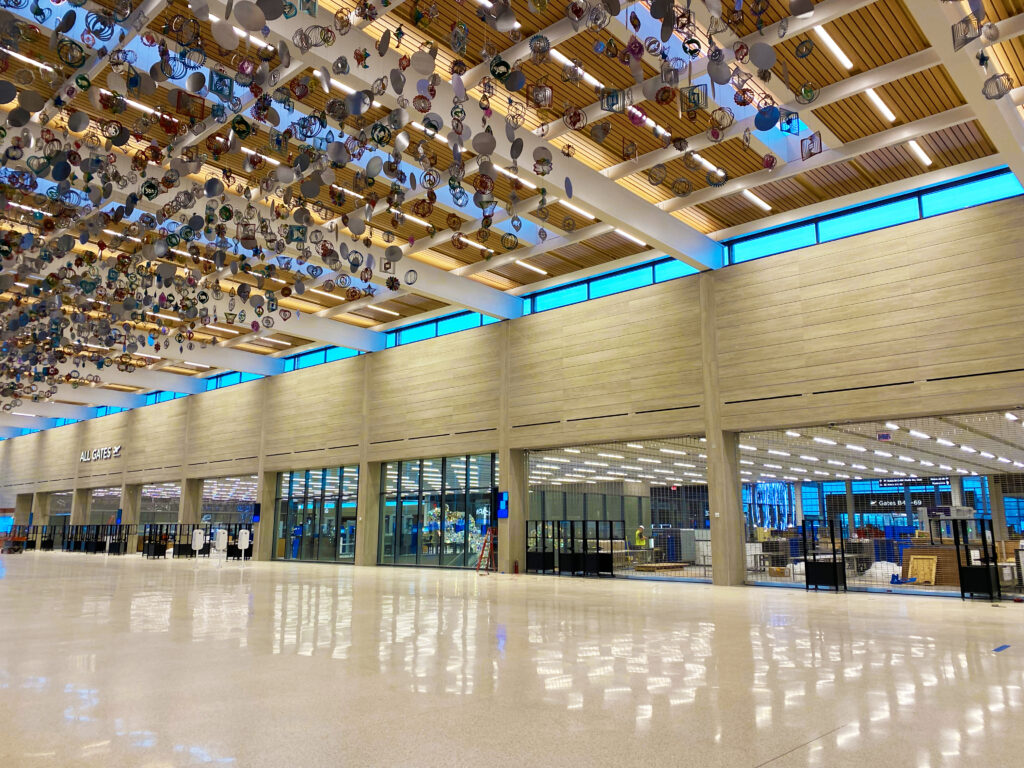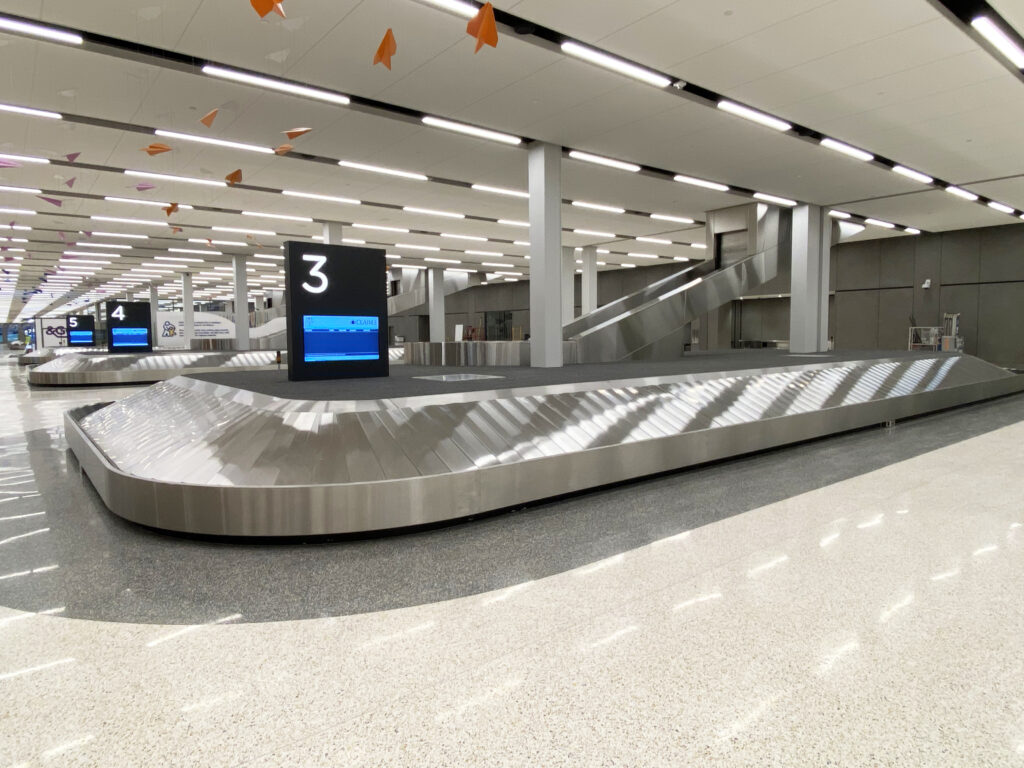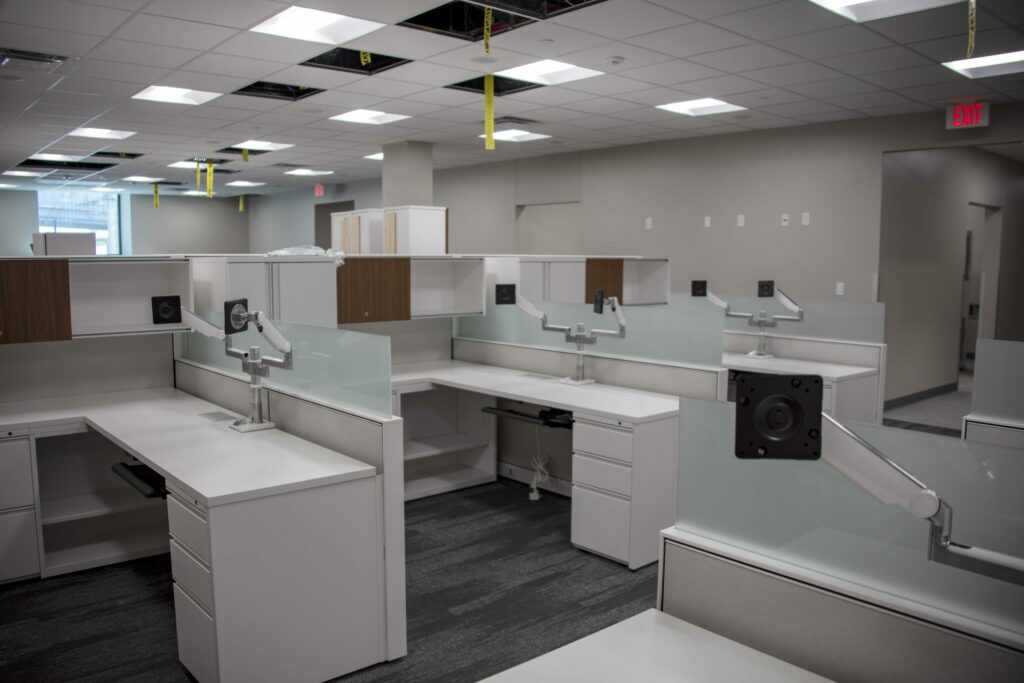News
KCI: #1 Best Airport Worldwide
June 29, 2023
In a remarkable achievement that underscores its commitment to excellence, Kansas City International Airport (KCI) has been honored with the prestigious title of “Best Airport Worldwide” by TravelAwaits. This recognition not only reflects KCI’s dedication to providing exceptional services to travelers but also highlights team collaboration with Fre3dom Interiors, the architect and the general contractor and KCAD in designing and furnishing the airport’s spaces.




Introduction:
Airports are bustling hubs of activity, serving as gateways to the world for millions of travelers each day. Behind the scenes, countless projects contribute to creating a seamless travel experience. One such endeavor is the design and implementation of airport furnishings. In this blog post, we will delve into the fascinating world of airport furnishings, exploring the challenges faced and the ultimate rewards gained from undertaking such a project.
Setting the Stage: Airport furnishings encompass a wide range of elements, including seating, information kiosks, baggage claim areas, gate lounges, and more. These furnishings play a pivotal role in shaping the overall ambiance, functionality, and efficiency of an airport terminal. Every aspect must be meticulously planned, keeping in mind factors such as passenger flow, accessibility, durability, and aesthetic appeal.
The Challenges:
- Designing for Diversity: Airports cater to a diverse range of travelers from various cultures, age groups, and mobility needs. Designing furnishings that are inclusive and accommodate everyone poses a significant challenge. Considerations must be made for individuals with disabilities, families with children, elderly passengers, and individuals with diverse comfort preferences.
- Ergonomics and Comfort: Airports are known for long waiting times, and providing comfortable seating solutions is essential. Balancing ergonomic design with durability can be tricky. Factors such as seat width, lumbar support, armrest placement, and cushioning must be carefully considered to ensure passenger comfort.
- Traffic Management: Airports are constantly in motion, with passengers rushing to catch flights or navigating their way through crowded terminals. Furnishings must be strategically placed to optimize passenger flow, minimize congestion, and prevent bottlenecks. Wayfinding signage and clear pathways become critical components in this aspect.
- Durability and Maintenance: The relentless foot traffic, luggage movement, and general wear and tear in an airport environment demand furnishings that can withstand the test of time. Choosing materials that are not only durable but also easy to maintain and clean becomes crucial to keep the airport looking its best and functioning efficiently.
The Rewards:
- Enhanced Passenger Experience: The primary goal of any airport furnishing project is to improve the overall passenger experience. Well-designed and comfortable furnishings create a positive atmosphere and reduce stress levels. They contribute to a sense of calm and well-being, making the travel journey more enjoyable for passengers.
- Branding and Aesthetics: Airport terminals often serve as the first and last impression of a city or country. Thoughtfully designed furnishings can reflect the local culture, values, and architectural style, creating a unique identity for the airport. Incorporating branding elements and creating visually appealing spaces can leave a lasting impression on travelers.
- Operational Efficiency: Efficiently designed furnishings optimize space utilization and enhance operational efficiency. By strategically placing seating, information kiosks, and amenities, airports can minimize congestion, facilitate passenger movement, and improve overall operational workflow. This can lead to reduced wait times, enhanced security processes, and increased customer satisfaction.
- Collaborative Endeavor: The journey of an airport furnishing project involves collaboration between architects, designers, airport operators, and various stakeholders. This collaborative effort fosters innovation, creativity, and problem-solving, resulting in a rewarding experience for everyone involved. Bringing together diverse perspectives and expertise creates a harmonious blend of functionality and aesthetics.
Conclusion:
Undertaking an airport furnishing project is a complex and multi-faceted endeavor, filled with challenges and rewards. Overcoming the hurdles of inclusivity, comfort, traffic management, and durability leads to an enhanced passenger experience, improved operational efficiency, and the creation of visually captivating spaces. Such projects showcase the power of collaboration and innovation, leaving a lasting impact on the millions of travelers who pass through these gateways to
